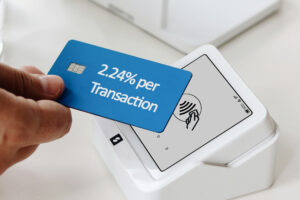Losing your job is a life-altering moment. The paychecks stop, but the bills don’t. Credit card payments, car loans, rent, groceries, utilities — it all keeps coming. If you’re here because you’ve lost your income and you’re wondering how to handle your financial obligations, especially your credit card or car payments, you’re not alone.
This guide is for you. We’re going to walk through your options with honesty, empathy, and practical next steps. You can get through this — and you don’t have to do it perfectly.
Step 1: Pause and Breathe — You’re Not a Failure
First, let’s say this: You are not your debt. You are not your job. And this setback does not define your future.
The emotional toll of losing a job can be just as devastating as the financial strain. It’s easy to feel embarrassed, overwhelmed, or frozen in place — but what you do next matters more than what just happened.
This is a season. And seasons change.
Step 2: Get Clear on Your Financial Picture
Start by looking at what’s coming in and what’s going out:
- How much money do you currently have? (bank accounts, emergency funds, cash)
- What bills are immediate and essential (housing, food, insurance)?
- Which debts are flexible, and which aren’t?
Make a simple list or spreadsheet — even a notepad will do. Seeing it laid out can reduce the mental stress and give you clarity.
Step 3: Contact Your Credit Card Issuers
Call your credit card company and explain the situation. Most major banks and issuers offer hardship assistance, especially for people who’ve lost their jobs.
Ask about:
- Temporary payment deferrals (skip or reduce payments for a few months)
- Lowered interest rates
- Waived fees
- Hardship repayment plans
Some companies also offer internal relief programs or can mark your account as “temporarily affected by financial hardship,” which may limit negative credit reporting.
👉 Tip: Ask for everything in writing and take notes during the call. Keep track of who you spoke with and when.
Step 4: Contact Your Auto Loan Lender
Falling behind on car payments can lead to repossession, but lenders would much rather keep you in the car and work out a plan.
When you call:
- Explain your job loss and how much income (if any) you still have
- Ask about deferment programs — many lenders offer 1 to 3 month skips
- Inquire about loan extensions or a temporary pause on interest
- Ask if refinancing is possible, especially if rates have dropped
Some lenders may allow you to skip a payment and add it to the end of the loan, giving you breathing room without damaging your standing.
Step 5: Prioritize Your Spending (The Survival Budget)
When income stops, the rules change. You need a survival budget — a plan for what absolutely must be paid first. That includes:
- Rent or mortgage
- Utilities (lights, water, internet, gas)
- Groceries and essential medications
- Transportation (fuel, insurance)
- Minimum payments on critical debts (to prevent collections)
Cut out or pause non-essentials like subscriptions, dining out, or auto-pays for things you don’t need immediately. This isn’t forever — it’s just for right now.
Step 6: Check for Government and Community Help
Don’t leave free help on the table. If you lost your job, you may qualify for:
- Unemployment benefits (apply ASAP — delays are common)
- SNAP/Food stamps or WIC assistance
- Utility payment relief programs
- Emergency rental assistance programs
- Job retraining or placement services through your state
Also check local nonprofits, churches, and community organizations — many offer food pantries, transportation vouchers, or emergency cash assistance.
Step 7: Explore Alternative Income Streams (Even Temporary Ones)
This may not be the career move you wanted, but even small temporary income can ease the burden:
- Gig apps (DoorDash, Instacart, Uber, TaskRabbit)
- Remote freelance jobs (writing, customer service, virtual assistance)
- Sell unused items online (Facebook Marketplace, OfferUp, eBay)
- Ask friends/family if they know of side work — pride aside, this is survival mode
Every extra dollar stretches your timeline and buys peace of mind.
Step 8: Avoid High-Risk “Quick Fix” Loans
This is important: Avoid payday loans, cash advances, and predatory lenders. They often lead to even worse financial trouble, with interest rates hitting 300% or more.
Instead, check:
- Local credit unions for small personal loans
- Nonprofit lenders or community development financial institutions (CDFIs)
- Your city’s emergency loan or rent assistance programs
If you absolutely must borrow, look for low-interest options with a clear repayment plan.
Step 9: Consider Credit Counseling (It’s Not Just for Bankruptcy)
Nonprofit credit counseling agencies can help you:
- Build a repayment plan
- Negotiate with creditors
- Consolidate debt without hurting your credit
- Understand your legal rights if you’re being threatened or harassed
Start with a certified group like NFCC.org (National Foundation for Credit Counseling). Many services are free or low cost.
Step 10: Keep Your Credit From Crashing (If Possible)
If you can’t make your full payments, try to:
- Pay at least the minimum when you can
- Ask creditors to report your account as current under a hardship plan
- Avoid applying for new credit unless truly needed
- Monitor your credit for errors or fraudulent activity (free services like Credit Karma can help)
Your score may dip during this time — and that’s okay. What matters most is protecting your future financial stability, not chasing a perfect number during a crisis.
Losing your job is hard. Falling behind on bills is harder. But asking for help — that’s strength.
Every call you make, every dollar you stretch, every small step you take is a win. Things may feel uncertain now, but they won’t stay this way forever.
You’re not failing — you’re adapting. And that’s what resilience looks like.




